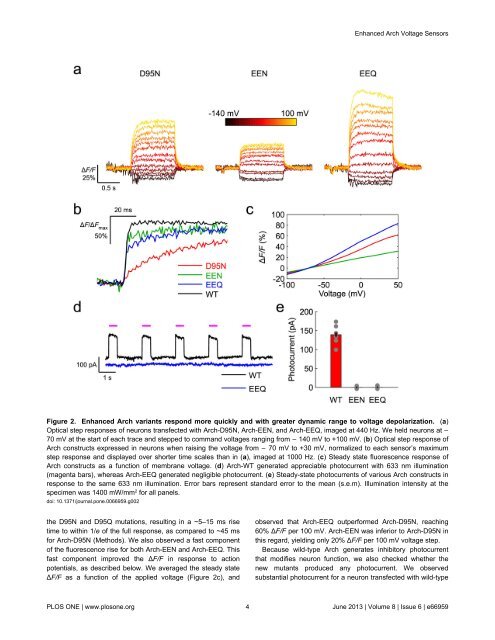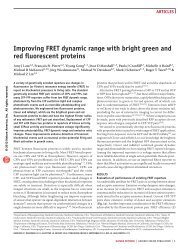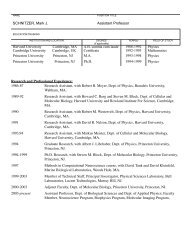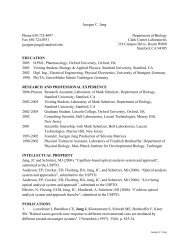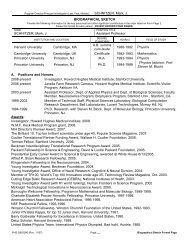Enhanced Archaerhodopsin Fluorescent Protein Voltage Indicators
Enhanced Archaerhodopsin Fluorescent Protein Voltage Indicators
Enhanced Archaerhodopsin Fluorescent Protein Voltage Indicators
Create successful ePaper yourself
Turn your PDF publications into a flip-book with our unique Google optimized e-Paper software.
<strong>Enhanced</strong> Arch <strong>Voltage</strong> Sensors<br />
Figure 2. <strong>Enhanced</strong> Arch variants respond more quickly and with greater dynamic range to voltage depolarization. (a)<br />
Optical step responses of neurons transfected with Arch-D95N, Arch-EEN, and Arch-EEQ, imaged at 440 Hz. We held neurons at ‒<br />
70 mV at the start of each trace and stepped to command voltages ranging from ‒ 140 mV to +100 mV. (b) Optical step response of<br />
Arch constructs expressed in neurons when raising the voltage from ‒ 70 mV to +30 mV, normalized to each sensor’s maximum<br />
step response and displayed over shorter time scales than in (a), imaged at 1000 Hz. (c) Steady state fluorescence response of<br />
Arch constructs as a function of membrane voltage. (d) Arch-WT generated appreciable photocurrent with 633 nm illumination<br />
(magenta bars), whereas Arch-EEQ generated negligible photocurrent. (e) Steady-state photocurrents of various Arch constructs in<br />
response to the same 633 nm illumination. Error bars represent standard error to the mean (s.e.m). Illumination intensity at the<br />
specimen was 1400 mW/mm 2 for all panels.<br />
doi: 10.1371/journal.pone.0066959.g002<br />
the D95N and D95Q mutations, resulting in a ~5–15 ms rise<br />
time to within 1/e of the full response, as compared to ~45 ms<br />
for Arch-D95N (Methods). We also observed a fast component<br />
of the fluorescence rise for both Arch-EEN and Arch-EEQ. This<br />
fast component improved the ∆F/F in response to action<br />
potentials, as described below. We averaged the steady state<br />
∆F/F as a function of the applied voltage (Figure 2c), and<br />
observed that Arch-EEQ outperformed Arch-D95N, reaching<br />
60% ∆F/F per 100 mV. Arch-EEN was inferior to Arch-D95N in<br />
this regard, yielding only 20% ∆F/F per 100 mV voltage step.<br />
Because wild-type Arch generates inhibitory photocurrent<br />
that modifies neuron function, we also checked whether the<br />
new mutants produced any photocurrent. We observed<br />
substantial photocurrent for a neuron transfected with wild-type<br />
PLOS ONE | www.plosone.org 4 June 2013 | Volume 8 | Issue 6 | e66959


